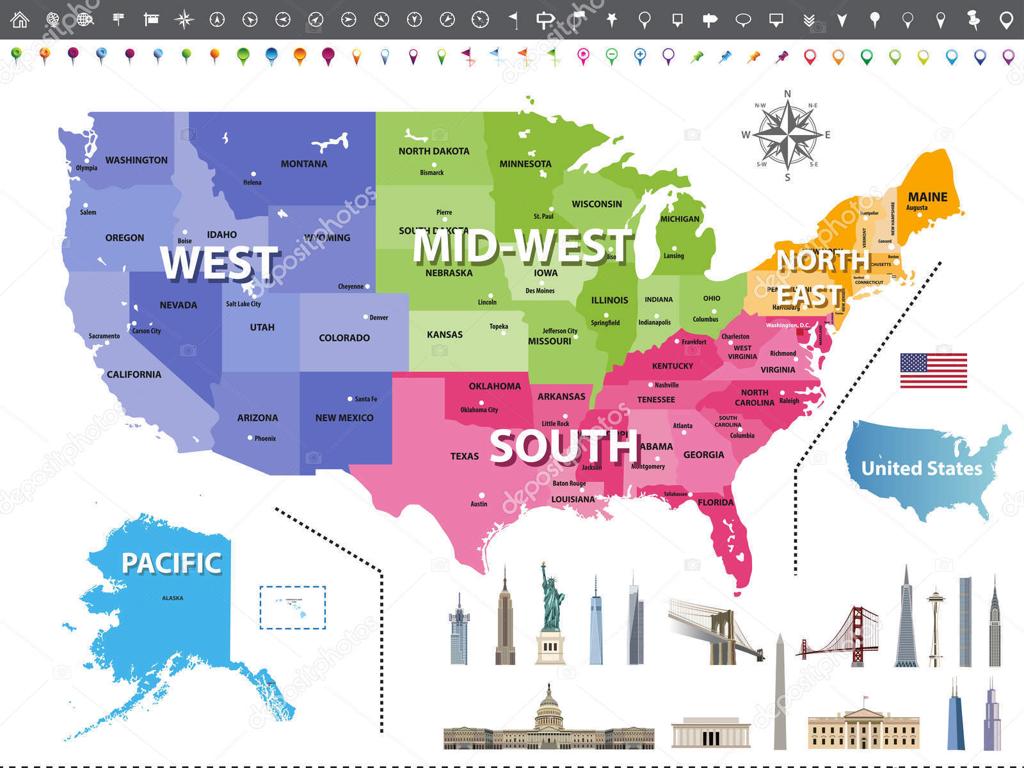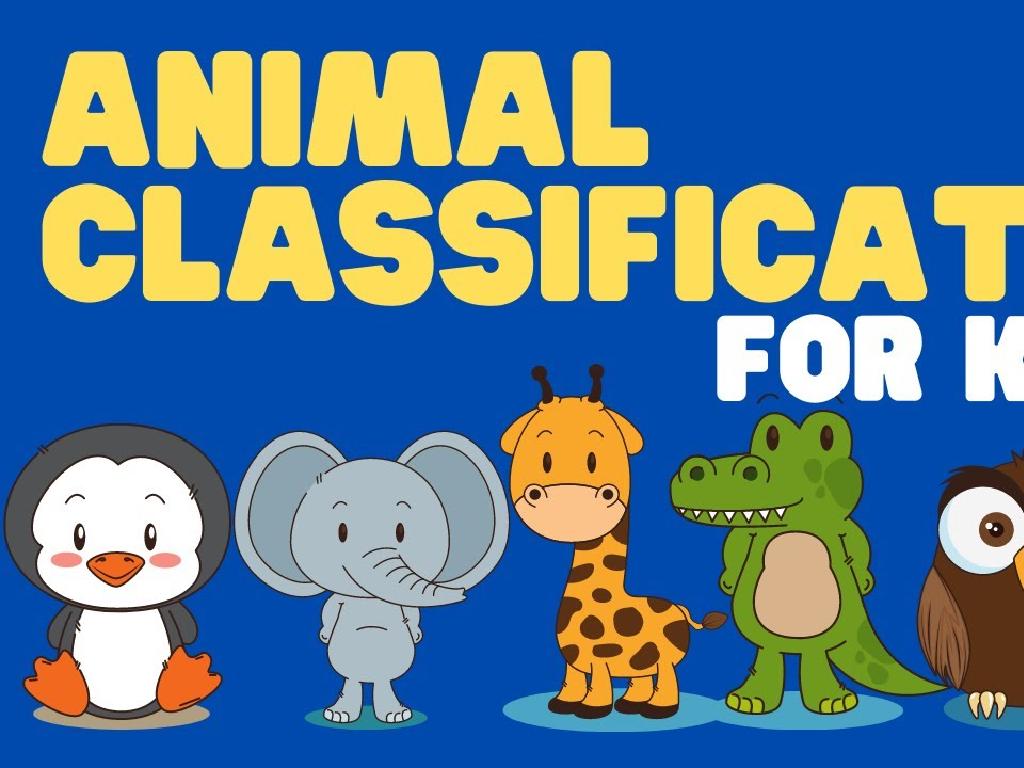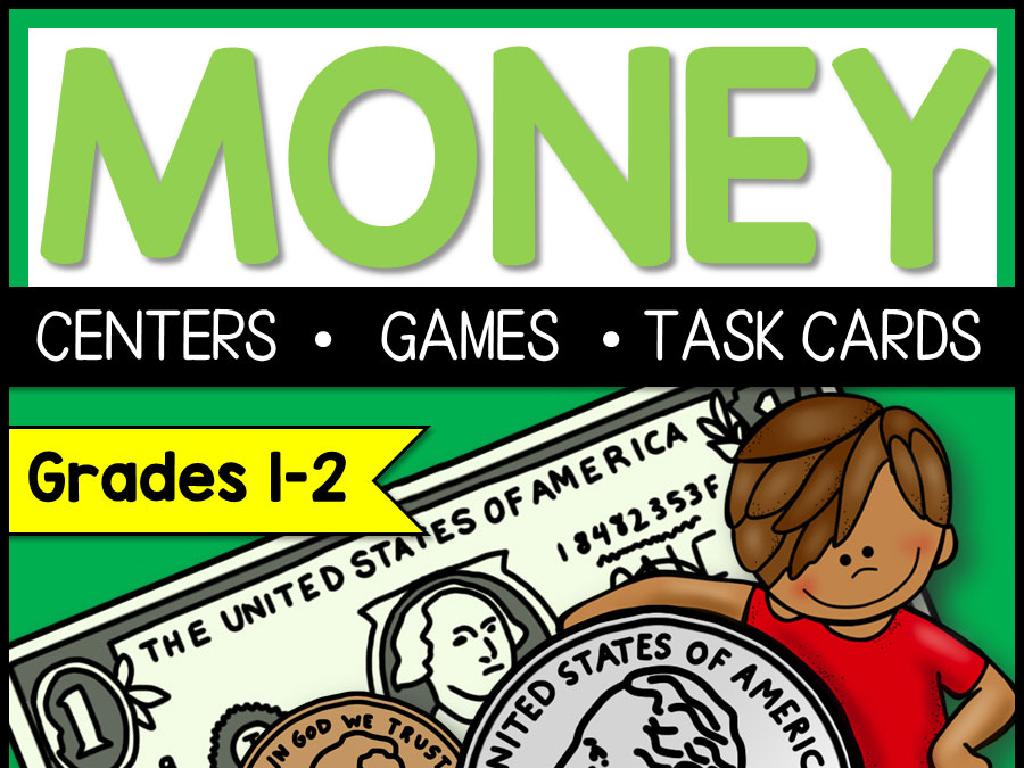Measurement Word Problems With Fractions
Subject: Math
Grade: Fourth grade
Topic: Measurement Word Problems
Please LOG IN to download the presentation. Access is available to registered users only.
View More Content
Understanding Measurement with Fractions
– Daily life measurements
– Think about cooking or building something.
– Introduction to fractions
– Fractions are parts of a whole, like 1/2 of a pizza.
– Fractions in measurements
– Use fractions to describe part of a distance, weight, or volume.
– Practice with real examples
|
This slide introduces students to the concept of using fractions in measurement, which is a vital skill in everyday life. Start by discussing how measurement is used in daily activities such as cooking, where you might use 1/2 a cup of sugar, or in building, where a board might need to be cut to 3/4 of its full length. Introduce fractions as a way to express parts of a whole in a clear and relatable manner. Then, explain how these fractions are used in measurements, providing real-world examples to solidify understanding. Encourage students to think of their own examples where they have encountered measurements expressed as fractions. The goal is to make students comfortable with the idea of combining the two concepts of measurement and fractions to solve problems.
Understanding Fractions in Measurements
– Review: Numerator & Denominator
– Top number is numerator, bottom is denominator
– Fractions in daily life
– Pizza slices, measuring cups, and clocks use fractions
– Adding & Subtracting fractions
– Combine like fractions by adding or subtracting numerators
– Practice with word problems
|
Begin with a review of the basic components of fractions, ensuring students understand the roles of the numerator and denominator. Relate fractions to everyday objects to make the concept more tangible; for example, slices of pizza or segments of a clock. Move on to demonstrate how to add and subtract fractions with the same denominator by working through the numerators. Provide word problems that involve measurement scenarios, such as combining different lengths of ribbon or subtracting quantities in a recipe, to apply these skills in a practical context. Encourage students to visualize these problems with drawings or physical objects. The goal is to solidify their understanding of fractions in both abstract and practical terms.
Understanding Measurement Units
– Explore measurement units
– Inches, feet, and yards are common units.
– Learn when to use each unit
– Inches for small objects, yards for longer distances.
– Practice unit conversion
– Convert inches to feet, feet to yards, and vice versa.
– Apply knowledge to word problems
|
This slide introduces students to the basic units of measurement used in the United States: inches, feet, and yards. It’s important to help students understand the appropriate situations for using each unit of measurement, such as using inches for small objects and yards for measuring longer distances like football fields. Teach students how to convert between these units, with 12 inches in a foot and 3 feet in a yard. Use real-world examples to make the concept more relatable. The slide sets the stage for students to solve word problems involving these units, reinforcing their understanding through practical application. Encourage students to think of examples where they would use each unit and to practice conversions as homework.
Solving Measurement Word Problems with Fractions
– Identify key words in problems
– Words like ‘total’, ‘part’, ‘length’, ‘width’ give clues about measurements.
– Comprehend the question asked
– What is the problem asking us to find out?
– Break down the problem into steps
– Step 1: Understand the scenario. Step 2: Identify the fractions. Step 3: Calculate.
– Apply fractions to measure
– Use fractions to add, subtract, multiply, or divide measurements.
|
This slide is aimed at helping fourth-grade students tackle measurement word problems involving fractions. Start by teaching them to look for key words that indicate measurements and actions, such as ‘total’, ‘part’, ‘length’, ‘width’, ‘half’, ‘quarter’, etc. Ensure they understand the question being asked: Are they finding a part of a measurement, combining measurements, or comparing them? Guide them through a step-by-step approach to solving the problem, which includes understanding the context, identifying the fractions involved, and performing the necessary calculations. Use examples like cutting a piece of ribbon into halves or thirds, or combining different lengths of wood to build a model. Encourage students to practice with real-life scenarios where they apply their knowledge of fractions to measure and solve problems.
Solving Measurement Problems with Fractions
– Apply fractions to measurements
– Use fractions for lengths, weights, volumes
– Example: Lengths in fractional units
– E.g., A rope is 3 1/2 yards long, cut into 1/2 yard pieces
– Solve a sample word problem
– How many 1/4 pound bags of flour can you get from a 5-pound sack?
– Discuss solutions as a class
|
This slide aims to teach students how to apply their knowledge of fractions to solve measurement word problems. Start by explaining how fractions are used in everyday measurements, such as in cooking or construction. Use visual aids to help students understand fractional units of length. Work through a sample problem as a class, guiding students step by step to find the solution. Encourage students to explain their reasoning and discuss different approaches to the problem. This interactive approach helps solidify their understanding of fractions in measurements.
Measurement Word Problems with Fractions
– Solve fraction measurement problems
– Use real-world scenarios involving fractions to measure lengths, weights, and volumes.
– Discuss solutions with a partner
– Pair up, compare answers, and explain your reasoning.
– Review problems together in class
– Select problems to solve as a class, fostering a collaborative learning environment.
– Understand fractions in measurements
|
This slide is focused on engaging students in active practice with measurement word problems that involve fractions. Start with individual practice where students solve problems on their own, allowing them to apply their knowledge of fractions in a measurement context. Then, have them pair up to discuss their solutions, which encourages peer learning and helps them articulate their thought process. Finally, bring the class together to review a few problems, which reinforces the learning objectives and ensures that any common misunderstandings are addressed. The teacher should prepare diverse problems of varying difficulty and be ready to guide discussions during pair and group reviews. Possible activities could include measuring ingredients for a recipe, calculating the length of a ribbon needed for a craft, or determining the amount of liquid in two different containers.
Class Activity: Measurement Scavenger Hunt
– Find objects to measure in class
– Record measurements with fractions
– Use rulers to measure length/height and express as fractions, like 1/2 inch or 3/4 foot
– Share your findings with classmates
– Understand measurement concepts
– This activity helps grasp the practical use of fractions in measuring real objects
|
This interactive class activity is designed to help students apply their knowledge of fractions in a real-world context by measuring objects found in the classroom. Provide students with rulers that have fractional increments. Encourage them to find various items to measure, such as books, desks, or window sills, and record their lengths or heights using fractions. After the scavenger hunt, students will present their findings to the class, explaining how they measured and what fractions they used. This will reinforce their understanding of measurement and fractions. Possible activities include measuring the same object with different units, comparing measurements with a partner, or estimating measurements before actually measuring.
Wrapping Up: Measurement with Fractions
– Review of today’s lesson
– Why measurement matters
– Measurements are used in cooking, building, and more.
– Homework: Word Problems Worksheet
– Solve problems using what we learned.
– Practice makes perfect!
– Keep practicing to improve your skills.
|
As we conclude today’s lesson on measurement word problems with fractions, it’s important to recap the key concepts we’ve covered. Emphasize the practical applications of measurement in everyday life, such as following a recipe or measuring materials for a craft project. For homework, students are assigned a worksheet that includes various word problems requiring the application of the skills learned today. Encourage students to approach these problems methodically, using the strategies discussed in class. Remind them that consistent practice is essential for mastering measurement with fractions, and this worksheet is a great opportunity to reinforce their learning.






